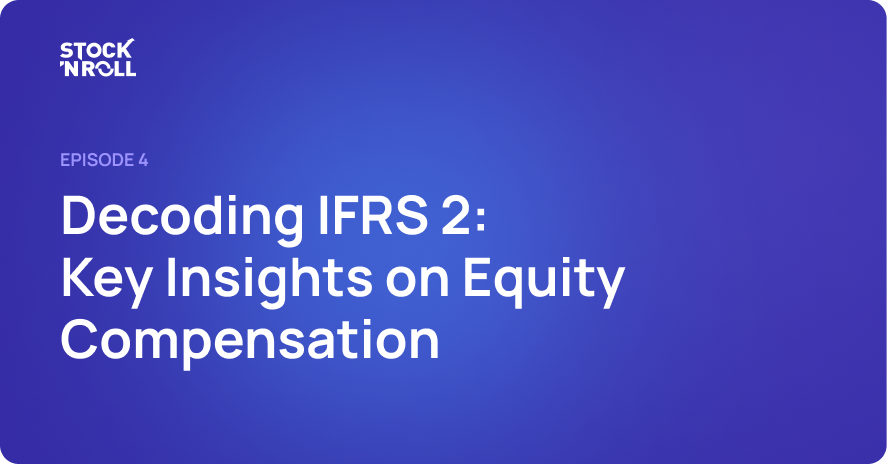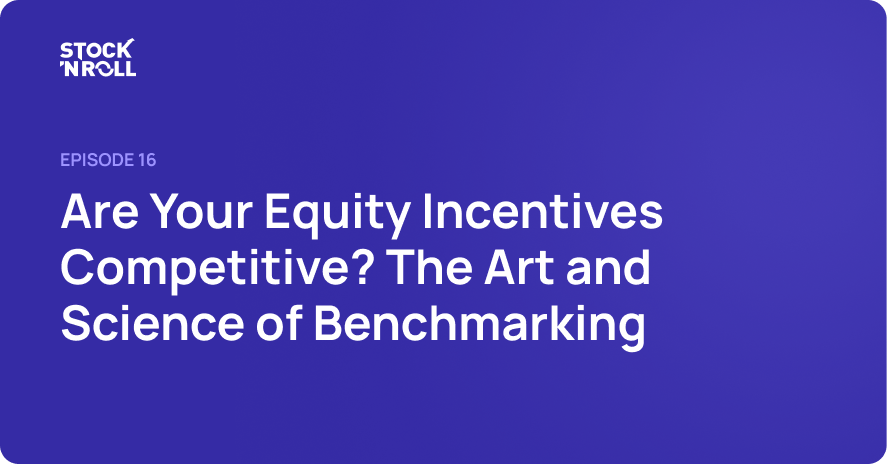In the ever-evolving world of equity compensation, accounting for share-based payments is both an art and a science. Christian Hyldig, who has carved out an impressive career journey through multinational transitions—from Computershare to AON—provides valuable insights into the intricate landscape of equity compensation. This blog post will cover key aspects discussed in our podcast Stock 'N Roll, shedding light on the principles and practical applications of IFRS 2, its impact on corporate financial practices, and the challenges faced by organizations today.
Introduction to IFRS 2
IFRS 2, introduced in 2004, serves as an overarching accounting standard for international companies, providing a framework to manage and report on equity-based compensation effectively. Its purpose is to eliminate the Wild West nature of previous practices, ensuring accurate reflection of costs associated with share-based payment arrangements in financial statements. Here's what you need to know:
- Purpose: Ensure transparency and consistency in reporting equity compensation.
- Requirements: Companies must calculate the fair value of equity instruments at the grant date, using models like Black-Scholes, Binomial, or Monte Carlo.
Models and Valuation Techniques
Choosing the right valuation model is crucial, as it directly affects the financial portrayal of a company's expenditures. Christian explains the utility of each model:
- Black-Scholes Model: Suitable for plain vanilla options, common due to its simplicity and consistency.
- Monte Carlo Simulation: Ideal for complex scenarios, though costlier.
- Binomial Model: Offers flexibility but requires detailed understanding and might face scrutiny from auditors.
Each model has its own pros and cons, and selecting the appropriate one depends on the equity instrument and company circumstances.
Managing Market-Based Performance Conditions
When dealing with performance-based conditions, such as Total Shareholder Return (TSR), the challenges intensify. Here are some key considerations:
- Peer Group Assessment: Defining and analyzing the peer group for comparison.
- Incorporating Dividends and Volatility: Understanding how dividends are treated and calculating volatility, potentially through weighted peer averages.
- Impact of Currency Fluctuations: How local vs. fixed currency can significantly alter outcomes.
Addressing Valuation Challenges
Christian highlights the complexities of assumptions in valuation, such as expected term estimation and the desire to maintain consistent methods. Decisions made early in the plan's design phase can have profound accounting implications:
- Consistency in Approach: Ensures credible reporting and easier auditor approval.
- Factoring in Plan Design Features: Elements like holding periods and absolute value caps can reduce fair values, affecting reported expenses significantly.
Spreading and Recognizing Costs
Understanding how to spread the cost of equity compensation over time is critical for accurate financial reporting:
- Expense Allocation: IFRS usually requires graded vesting, which differs markedly from US GAAP’s straight-line method.
- Market-Based Conditions: For plans with these conditions, expected vesting periods guide expense timing.
Christian emphasizes the importance of early documentation and utilizing historical data to refine assumptions, which can lead to more precise reporting.
Conclusion and Best Practices
When designing equity compensation plans, corporate leaders must integrate financial, legal, and HR perspectives. Having the financial reporting team at the planning table ensures robust evaluation and minimizes potential pitfalls. Here are critical takeaways:
- Avoid Complication Through Simplicity: Steer clear of structures like choice plans that pose accounting challenges.
- Engage Multi-Disciplinary Teams: Collaborative planning can lead to more resilient, adaptable plans.
- Continuous Learning and Adapting: Stay informed on accounting standards and updates to enhance corporate strategies.
This episode with Christian Hyldig serves as a crucial reminder that navigating equity compensation is a journey requiring continuous education, careful planning, and strategic foresight. Companies that master these elements not only achieve compliance but also optimize their financial performance, making them more attractive to investors and shareholders alike.


Interested in being a guest or do you know someone that would be?
Subscribe below and follow us on social media to stay updated with our insightful blog posts. We're here to help you navigate the world of equity incentives and drive your company's success!




